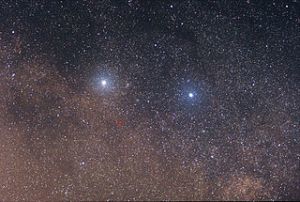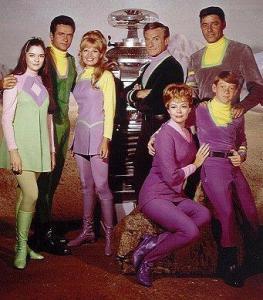Closest Star Has Planet With Earthiness #star #space #tech #science

The two bright stars are (left) α Centauri and (right) β Centauri. The faint red star in the center of the red circle is Proxima Centauri. – the planet has been detected using spectrographs
The closest star to Earth’s Sun, called Proxima Centauri, is a relatively faint and cool red dwarf. It doesn’t seem a promising place to look for a second home for humanity – but, surprise!
It seems to have a rocky planet a bit bigger than Earth, with a “year” that’s 11.2 days long. It’s a lot closer to its star than Earth to the Sun, but because the star is cool, it gets about 2/3 the light and heat Earth does. It could have liquid water.
This is HUGE news: Astronomers have found a planet orbiting the Proxima Centauri, the closest star to the Sun! Holy wow. Seriously. Wow.” [Bad Astronomy]
If it has an atmosphere and if that atmosphere has CO2 and if that atmosphere isn’t toxic – it might possibly support earth-like life. But not life with technology like ours – SETI has listened to Proxima and heard nothing exciting.
Close is relative in the galaxy – Proxima is 40 trillion kilometers away. That’s about 4 light years and we have no way to travel at near-light speed. But maybe we can get close enough for a mission to fit within a human lifetime.
Aided by famed physicist Steven Hawking, billionaire Yuri Milner is prepared to send probes – teeny-tiny probes.
Instead of sending one big expensive machine, you can send hundreds of these. Interstellar medium is dangerous. There are dust particles that can destroy your technology… a grain of dust, only a hundredth of a millimeter big, could completely destroy [a single probe]. At the rate and distance it’d be traveling, 30 percent of the craft would be eaten away by dust before it got there.” [Popular Science]
Propelled by a tiny light sail receiving a laser beam from Earth (or from Earth orbit) each probe could build up to a decent 20% of light speed.
Of course, there’s nothing at Proxima to slow the probes down, so this would be a
Flyby mission. You go for 20 years, and you have about 1 day to take your measurements [and] a few years to send the images back.” [Popular Science]

Promo for Lost in Space, scifi/fantasy TV show that sent settlers to Proxima Centauri’s partner star Alpha Centauri – see fair use via link
While we wait for this billionaire’s hobby-probes to take flight, I’m hopeful telescopes will eventually see if there’s a faint fuzziness to the planet which could indicate an atmosphere. That would encourage exploration. Maybe some future teeny-tiny probes could be big enough to carry breaking engines and enter orbit. There’s no reason to wait for the first probes to arrive before launching a second and third generation – if the billionaire’s money holds out.
I may never see such probes fly – but like Bad Astronomy says: Wow.
Thanks Bad_Astronomy and Popular Science.
Filed under: Neat Science News Tagged: atmosphere, Bad Astronomy, earthlike planet, exoplanet, is there life in the galaxy universe, laser, probe, Proxima Centauri b










